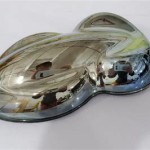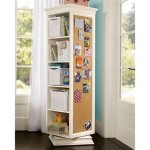Ballet Barre and Mirror: Essential Elements of Dance Training
The ballet barre and mirror are quintessential components of any ballet studio, serving as vital tools for dancers of all levels. They are not mere decorative elements; instead, they are functionally integrated into the training process, contributing significantly to technique development, self-awareness, and artistic refinement. Understanding the purpose and proper utilization of these elements is crucial for maximizing the benefits of ballet training.
The ballet barre, a horizontal support typically made of wood or metal, provides stability and balance during exercises. Its primary role is to assist dancers in maintaining proper alignment and posture while executing fundamental ballet movements. The height and diameter of the barre are carefully considered to accommodate a range of body types and skill levels. The mirror, strategically positioned across from the barre, offers immediate visual feedback, allowing dancers to observe and correct their form and technique in real-time. The combined presence of the barre and mirror creates an environment conducive to focused practice and continuous improvement.
The Role of the Barre in Ballet Training
The ballet barre serves as an indispensable tool, particularly in the initial stages of training. Its support enables dancers to execute exercises that enhance strength, flexibility, and coordination. Barre work typically comprises a series of structured exercises designed to isolate and develop specific muscle groups. These exercises, often performed in a specific sequence, prepare the body for more complex movements in center work, where dancers perform without the support of the barre.
One of the primary functions of the barre is to aid in the development of proper alignment. Ballet requires precise positioning of the body, including the spine, shoulders, hips, and legs. The barre provides a stable point of reference, allowing dancers to maintain a neutral spine and engage the core muscles, which are essential for stability and control. By holding onto the barre, dancers can focus on lengthening the spine and aligning the hips over the heels, thereby establishing a solid foundation for subsequent movements.
The barre also facilitates the development of turnout, a fundamental principle of ballet technique. Turnout refers to the outward rotation of the legs from the hips. Barre exercises, such as pliés, tendus, and dégagés, are specifically designed to improve turnout and strengthen the muscles responsible for maintaining this rotation. The barre allows dancers to gradually increase their turnout without compromising stability or risking injury. By using the barre as a support, dancers can isolate and strengthen the muscles around the hip joint, promoting a greater range of motion and reducing the strain on the knees and ankles.
Furthermore, the barre plays a crucial role in developing balance and coordination. Many barre exercises involve balancing on one leg while executing specific movements with the other leg. This requires the dancer to engage the core muscles and maintain a stable center of gravity. The barre provides a safety net, allowing dancers to experiment with different balances and refine their coordination without the fear of falling. As dancers progress, they gradually reduce their reliance on the barre, developing the strength and control necessary to perform more challenging balances in center work.
The barre is also instrumental in improving flexibility. Stretching exercises are often incorporated into barre work to increase the range of motion in the legs, hips, and back. These stretches, performed with the support of the barre, allow dancers to safely and effectively increase their flexibility, which is essential for executing a wide range of ballet movements. The barre provides a stable point of reference, enabling dancers to maintain proper alignment and avoid overstretching.
The Importance of Mirrors in Ballet Training
Mirrors are integral to ballet training because they provide dancers with immediate visual feedback on their posture, alignment, and technique. By observing their reflections, dancers can identify and correct errors in their form, leading to improved execution and a reduced risk of injury. The mirror serves as an external observer, offering an objective assessment of the dancer's movements.
One of the primary benefits of using mirrors is that they enhance self-awareness. Dancers can use the mirror to observe their body position from different angles, gaining a better understanding of how their movements appear to others. This increased self-awareness allows them to make subtle adjustments to their technique, improving the overall quality of their performance. By watching themselves in the mirror, dancers can identify areas where they are holding tension or misaligning their bodies, allowing them to correct these issues and move with greater ease and efficiency.
Mirrors also facilitate the development of proper alignment. Ballet requires precise positioning of the body, and the mirror provides a visual reference point for achieving this alignment. Dancers can use the mirror to ensure that their shoulders are aligned over their hips, their knees are aligned over their toes, and their heads are aligned over their shoulders. By constantly monitoring their alignment in the mirror, dancers can develop a strong sense of body awareness and maintain proper posture throughout their training.
The mirror is also invaluable for refining technique. Dancers can use the mirror to observe the details of their movements, such as the placement of their arms, the extension of their legs, and the coordination of their steps. By watching themselves in the mirror, dancers can identify areas where they need to improve and make adjustments to their technique accordingly. The mirror allows dancers to see themselves as others see them, which can be particularly helpful in identifying and correcting subtle errors that might otherwise go unnoticed.
Furthermore, mirrors contribute to the development of artistry and performance quality. Ballet is not just about technical proficiency; it is also about conveying emotion and creating a visually appealing performance. Dancers can use the mirror to observe their facial expressions, their body language, and their overall stage presence. By watching themselves in the mirror, dancers can refine their performance and ensure that they are effectively communicating their artistic intentions to the audience.
Optimizing the Use of Barre and Mirror in Ballet Training
To maximize the benefits of the ballet barre and mirror, it is essential to use them effectively and intentionally. This involves maintaining proper alignment, focusing on specific details, and integrating visual feedback into the training process. Dancers should strive to develop a deep understanding of their own bodies and how they move in space.
One key aspect of effective barre work is maintaining proper alignment. Dancers should focus on lengthening the spine, engaging the core muscles, and aligning the hips over the heels. It is important to avoid leaning into the barre or using it as a crutch. Instead, the barre should be used as a support to maintain balance and facilitate proper alignment. Dancers should also pay attention to the placement of their shoulders, ensuring that they are relaxed and aligned over their hips. Maintaining proper alignment is crucial for preventing injuries and maximizing the effectiveness of barre exercises.
When using the mirror, dancers should focus on specific details of their technique. Rather than simply glancing at their reflection, they should actively observe their body position, their movements, and their facial expressions. It is helpful to break down complex movements into smaller components and focus on perfecting each component individually. Dancers should also pay attention to the quality of their movements, ensuring that they are smooth, controlled, and expressive. By focusing on specific details, dancers can gradually improve their technique and refine their performance.
Integrating visual feedback into the training process is another essential aspect of optimizing the use of the barre and mirror. Dancers should use the mirror to identify areas where they need to improve and make adjustments to their technique accordingly. It is helpful to work with a qualified instructor who can provide personalized feedback and guidance. The instructor can help dancers identify areas where they are misaligning their bodies, using incorrect technique, or holding tension. By integrating visual feedback and expert guidance, dancers can accelerate their progress and achieve their full potential.
Furthermore, it is important to develop a deep understanding of one's own body and how it moves in space. This involves paying attention to the sensations in the body, such as the engagement of specific muscles, the stretch in certain areas, and the balance between different parts of the body. Dancers should strive to develop a strong sense of body awareness, which will allow them to make subtle adjustments to their technique and improve their overall performance. By combining visual feedback with a deep understanding of their own bodies, dancers can maximize the benefits of the ballet barre and mirror and achieve their artistic goals.
The ballet barre and mirror are not merely static objects within a dance studio; they are dynamic tools that, when used effectively, contribute significantly to a dancer's development. They foster strength, balance, alignment, and artistry, serving as constant companions on the path to technical mastery and artistic expression. Their proper utilization is paramount for both aspiring and seasoned dancers seeking to refine their skills and elevate their performance quality.

Diy Ballet Barre And How To Hang A Heavy Mirror

Pin By Joanna Rara On Builder Jo Completed Projects Gym Room At Home Design Ballet

Ballet Barre Room Decor Pottery Barn Teen

Ballet Barre Mounted On A Large Frameless Mirror In Home Gym Featuring Space For Yoga And Other Various Exe Room At Workout Decor

Why Are Ballet Barres Important Glass Installations
Dinamica Ballet Amadeus Mirror Buy At Sport Thieme Com

Ballet Barre Company Provide Barres Floors And Studio Mirrors

Tips Tricks Archives Alvas Barres Floors Mirrors

Silver Leaf Beveled Mirror With Ballet Barre Transitional Girl S Room

Portable Single Ballet Barre With Mirror Unisport







